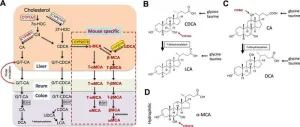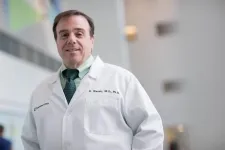(Press-News.org) (WASHINGTON, June 6, 2024) – Patients with atrial fibrillation (Afib) who took low doses of blood-thinning medications known as direct oral anticoagulants (DOACs) experienced more bleeding episodes during the first three months of treatment and about one in five had high blood levels of the medications, compared with similar patients who took standard doses of the same medications, according to a study published in Blood Advances.
Patients with Afib, a common type of arrhythmia, or irregular heart rhythm, face a fivefold risk of stroke and are therefore often prescribed blood-thinning medications (anticoagulants) to slow blood clotting. To reduce the risk of unwanted and sometimes dangerous bleeding and other adverse effects associated with these medications, doctors may opt to prescribe lower doses to patients deemed high risk for bleeding. In the United States, Afib affects up to 6 million people and causes an estimated 450,000 hospitalizations annually. Risk for Afib increases with age.
“We found that 58% of bleeding complications occurred in patients who were treated with low doses of DOACs,” said Gualtiero Palareti, MD, of the Arianna Anticoagulation Foundation in Bologna, Italy, and the study’s coordinator, who noted that people with Afib often need these medications lifelong. “Not only did the use of low doses not reduce bleeding risk, it also did not prevent patients from developing high blood levels of the medication.”
Four DOACs are approved in the United States and Europe: apixaban, dabigatran, edoxaban, and rivaroxaban. DOACs are prescribed at fixed doses based on a patient’s age, weight, and other health conditions. To reduce the risk of bleeding and blood-clotting complications, doctors may prescribe lower doses of the medications to patients who are older or who have other health conditions that might increase their risk for these complications. Observational studies have shown that patients with Afib who are treated with DOACs have fewer strokes and blood clots than patients with Afib who are treated with warfarin, an older blood-thinning medication.
Unlike with warfarin, most patients treated with DOACs do not undergo regular tests to measure blood levels of the medication. However, recent studies have suggested that blood levels of DOACs can vary considerably between patients and that levels that are too low or too high may increase patients’ risk for blood clots and bleeding episodes.
Dr. Palareti and his colleagues designed the Measure and See study, or MAS, to examine whether a relationship existed between blood levels of DOACs, measured soon after initiating the drugs to treat Afib, and the occurrence of blood clots and bleeding episodes. In a paper published in Blood Advances in April, they reported that patients with the lowest blood levels of their DOAC medication, measured soon after initiating treatment, experienced the most blood clots during a one-year follow-up period. The current study looked at the relationship between measured blood levels of DOACs and bleeding events.
The MAS study involved 1,657 patients with Afib (median age 80, 54% men); the choice of DOAC prescribed was left up to the treating physician. The patients had blood drawn within two to four weeks of beginning treatment with a DOAC and immediately before they were to take their next pill, when blood levels of the drug were expected to be at their lowest. Patients were evaluated during the first month of treatment and received check-ups every three to four months for a year.
All patient blood samples were analyzed in the same laboratory. An independent committee, whose members did not know the patients’ identities or blood-draw results, assessed and recorded all bleeding events, blood clots, strokes, heart attacks, deaths due to a stroke or heart disease, and other adverse events during the 12-month follow-up period. Primary endpoints for the current study were major bleeding and bleeding requiring medical intervention, hospitalization, or evaluation.
Results showed that 50 patients (3.1%) experienced bleeding events, of which 29 (58%) occurred in patients treated with low doses of a DOAC. About 30% of all recorded bleeding events occurred in patients who had the highest blood levels of their medication. During the first three months of treatment, bleeding events occurred significantly more frequently in patients who had the highest blood levels of their medication.
“Our findings indicate that treatment with low doses of a DOAC does not necessarily prevent the occurrence of high blood levels of the drug,” said Dr. Palareti. “This predisposes patients to a higher risk of bleeding during the first three months of treatment – a period when the risk of bleeding due to oral anticoagulants is already elevated.”
After the first three months, the risk of bleeding events was not associated with either low-dose treatment or blood levels of the medication. “This suggests that the risk of bleeding events during anticoagulant treatment is multicausal,” Dr. Palareti said.
Alongside the results of the study published in April, these findings suggest that measuring medication levels in patient’s blood shortly after initiating DOAC treatment and tailoring the medication dose accordingly might help to avoid excessively low or high blood levels and reduce bleeding and clotting complications, especially in patients who are prescribed low-dose treatment, Dr. Palareti said. He and his colleagues are now planning a pilot clinical trial to test this approach.
The researchers noted a few limitations to their study. Study enrollment was adversely affected by the COVID-19 pandemic. While 27 centers in Italy participated in the study, 75% of the patients were recruited at just one center, potentially limiting the results’ generalizability. Medication levels in a patient’s blood were tested only once, in one central laboratory, within a month of entering the study and beginning DOAC treatment.
The study was funded by the Arianna Anticoagulation Foundation.
###
Blood Advances (bloodadvances.org) is an online, open access journal publishing more peer-reviewed hematology research than any other academic journal worldwide. Blood Advances is part of the Blood journals portfolio (bloodjournals.org) from the American Society of Hematology (ASH) (hematology.org).
Contact: Melissa McGue
mmcgue@hematology.org; 202-552-4927
END
Afib patients on low doses of blood thinners have more bleeding episodes than those on standard doses
Risk of bleeding highest in first three months of treatment, even in patients on low doses of direct oral anticoagulants
2024-06-06
ELSE PRESS RELEASES FROM THIS DATE:
Severity of calls to US poison centers increases sharply for both adults, kids
2024-06-06
America’s poison centers are fielding increasingly severe cases that are dramatically more likely to lead to severe harm or death in both adults and children, a new study from the University of Virginia School of Medicine reveals.
The number of calls about intentional exposures that resulted in death among adults increased a whopping 233.9% between the beginning of 2007 and the end of 2021, the study reveals. “Intentional exposures” include cases such as suicide attempts, use of illegal drugs and ...
Novel diamond quantum magnetometer for ambient condition magnetoencephalography
2024-06-06
Magnetoencephalography (MEG) is a biomedical imaging technique used for mapping brain activity by recording magnetic fields produced by the naturally occurring electrical currents generated by neurons in the brain, using very sensitive magnetometers. Currently, MEG requires a magnetically shielded room for operation. Achieving MEG that works in normal environments, without the need for magnetic shielding, is a major goal. This would enable daily diagnosis, brain-machine interfaces, and fundamental research on brain function.
Magnetometers using diamond quantum sensors with nitrogen–vacancy (NV) centers are promising candidates for realizing ambient ...
Novel lipopeptide proves lethal against Staphylococcus areus
2024-06-06
A novel antibacterial lipopeptide produced by the bacterium Serratia marcescens has been shown to be highly effective in killing Staphylococcus aureus – one of the most important pathogens occurring in humans.
Staphylococcus aureus is one of the five most common causes of hospital-acquired infections and is often the cause of life-threatening infections following surgery. Since the introduction of antibiotics in the early 1940s, S. aureus has by now developed resistance against most classes of antibiotics, ...
Harposporium incensis sp. nov., a South American cordycipitoid species exhibiting inter-phylum host-jumping and having potential as a biological control agent for pest management
2024-06-06
The genus of Harposporium belongs to the Ascomycota of the Fungi kingdom, the class Sortariomycetes, the order Hypocreales, and the family Ophiocordyceiaceae, is a common genus of soil fungi. The species of Harposporium are pathogens of nematodes, with some also infecting rotifers or tardigrades, and has significant ecological value. In recent years, studies have shown that a few species of the genus Harposporium can also parasitize insects or other invertebrates, such as H. janus, which can infect beetles in the Coleoptera family. However, so far, it has not been found that the same species in this genus can parasitize different invertebrates in both sexual and asexual stages. Is there a ...
Balancing act between digestion and liver health through bile acids
2024-06-06
Bile acids are essential molecules the liver produces that play a critical role in digestion. They help us absorb fat-soluble vitamins and cholesterol from our food. However, bile acids can become a double-edged sword. While they are necessary for proper digestion, high concentrations can also be toxic to the liver.
Recent research is shedding light on the complex relationship between bile acids and liver health. Scientists have identified new ways in which bile acids interact with cellular stress responses, impacting how the liver functions in diseases ...
Cleveland clinic-led study links sugar substitute to increased risk of heart attack and stroke
2024-06-06
June 6, 2024, Cleveland: Cleveland Clinic researchers found higher amounts of the sugar alcohol xylitol are associated with increased risk of cardiovascular events like heart attack and stroke.
The team, led by Stanley Hazen, M.D., Ph.D., confirmed the association in a large-scale patient analysis, preclinical research models and a clinical intervention study. Findings were published today in the European Heart Journal.
Xylitol is a common sugar substitute used in sugar-free candy, gums, baked ...
Vigorous exercise may preserve cognition in high-risk patients with hypertension
2024-06-06
WINSTON-SALEM, N.C. – June 6, 2024 – People with high blood pressure have a higher risk of cognitive impairment, including dementia, but a new study from researchers at Wake Forest University School of Medicine suggests that engaging in vigorous physical activity more than once a week can lower that risk.
The findings appear online today in Alzheimer’s & Dementia: The Journal of the Alzheimer’s Association.
“We know that physical exercise offers many benefits, including lowering blood pressure, improving heart health and potentially delaying cognitive decline,” said Richard Kazibwe, ...
Sanders-Brown study: Long-read RNA sequencing reveals key gene expressions in Alzheimer’s disease
2024-06-06
LEXINGTON, Ky. — Researchers at the University of Kentucky Sanders-Brown Center on Aging are working to develop a pre-symptomatic disease diagnostic tool for Alzheimer’s disease.
“While the need for better treatments is clear, such treatments will not be very meaningful if they are administered after symptoms have onset. By then, Alzheimer’s disease has been ravaging the brain for decades to the point the brain can no longer compensate for the extreme cellular death,” said Mark ...
Women with excess weight as a teen or young adult may have higher stroke risk by age 55
2024-06-06
Research Highlights:
Women with excess weight at age 14 or 31 may have increased ischemic (clot caused) stroke risk before age 55. The same ischemic stroke risk was not found in men.
Losing excess weight after adolescence may not eliminate the stroke risk.
These findings are according to a study conducted in Finland that followed more than 10,000 people from birth into their 50s.
Researchers suggest health care professionals pay attention to overweight and obesity in young people and work with them to promote healthy eating and physical activity from an early age.
Embargoed ...
New glioblastoma treatment reaches human brain tumor and helps immune cells recognize cancer cells
2024-06-06
· Major advance for treatment of deadly brain cancer
· Clinical trial launched at Northwestern to test treatment
· Ultrasound microbubbles open blood-brain barrier to admit chemotherapy and immunotherapy cocktail
CHICAGO --- In a major advance for the treatment of the deadly brain cancer glioblastoma, Northwestern Medicine scientists used ultrasound technology to penetrate the blood-brain barrier and provide a small dose of a chemotherapy and immunotherapy drug cocktail. The study found that this treatment ...
LAST 30 PRESS RELEASES:
NTIDE: Disability employment holds steady after data hiatus
Social lives of viruses affect antiviral resistance
Dose of psilocybin, dash of rabies point to treatment for depression
Helping health care providers navigate social, political, and legal barriers to patient care
Barrow Neurological Institute, University of Calgary study urges “major change” to migraine treatment in Emergency Departments
Using smartphones to improve disaster search and rescue
Robust new photocatalyst paves the way for cleaner hydrogen peroxide production and greener chemical manufacturing
Ultrafast material captures toxic PFAS at record speed and capacity
Plant phenolic acids supercharge old antibiotics against multidrug resistant E. coli
UNC-Chapel Hill study shows AI can dramatically speed up digitizing natural history collections
OYE Therapeutics closes $5M convertible note round, advancing toward clinical development
Membrane ‘neighborhood’ helps transporter protein regulate cell signaling
Naval aviator turned NPS doctoral student earns national recognition for applied quantum research
Astronomers watch stars explode in real time through new images
Carbon-negative building material developed at Worcester Polytechnic Institute published in matter
Free radicals caught in the act with slow spectroscopy
New research highlights Syntax Bio’s platform for simple yet powerful programming of human stem cells
Researchers from the HSE University investigated reading in adolescents
Penn Nursing study: Virtual nursing programs in hospitals fall short of expectations
Although public overwhelmingly supports hepatitis B vaccine for a newborn, partisan differences exist
DFW backs UTA research to bolster flood resilience
AI brain scan model identifies stroke, brain tumors and aneurysms – helping radiologists triage and speed up diagnoses
U.S. News & World Report gives Hebrew Rehabilitation Center highest rating
Optica and DPG name Antoine Browaeys 2026 Herbert Walther Award recipient
The presence of a gun in the home increases the risk of suicide by three to five times
PFAS exposure and endocrine disruption among women
Vaccines and the 2024 US presidential election
New approach narrows uncertainty in future warming and remaining carbon budget for 2 °C
When pregnancy emergencies collide with state abortion bans
American College of Cardiology supports front of package nutrition labeling
[Press-News.org] Afib patients on low doses of blood thinners have more bleeding episodes than those on standard dosesRisk of bleeding highest in first three months of treatment, even in patients on low doses of direct oral anticoagulants







